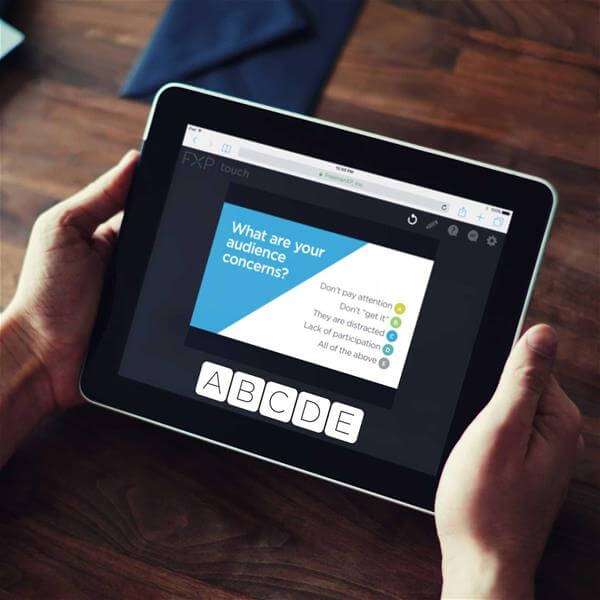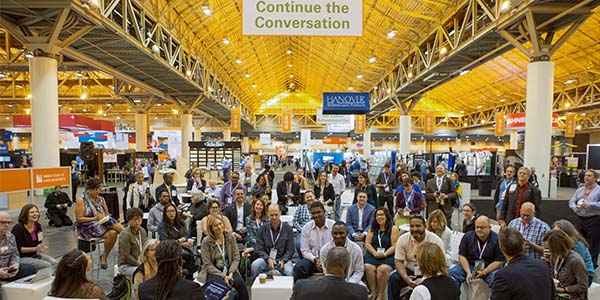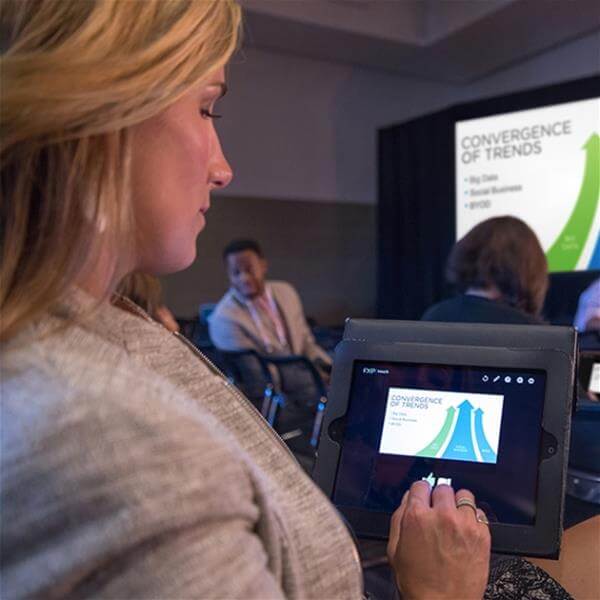It’s the standard equation that so many meeting professionals have relied on when designing their programs. A PowerPoint presentation + a subject matter expert at the front of the room = an education session.
Start the presentation, let attendees take notes and voila! They’ll return home feeling smarter, right? Not so fast. Today’s attendees are looking for more than opportunities to listen to someone speak as they earn education credits; they want to be active participants who can contribute to the conversation in the room. So how can meeting professionals create an environment that delivers that type of engagement? It all starts with the speakers.
“Once a conference begins, meeting professionals turn over a great degree of control to the speakers who are leading sessions,” Deborah Sexton, President and CEO, PCMA, says. “For the 45 minutes or so that they’re delivering content, they’re at the steering wheel, and they’re responsible for making sure that the session moves in an interactive direction.”
Speakers may face some challenges. Why? Because attendees are tethered to their screens. However, that’s not necessarily bad news. While many meeting professionals have worried that digital devices can create hurdles for the learning process, technology can turn those smartphones, tablets and laptops into some powerful teaching assistants. “We have progressed from a time when attendees were asked to turn off their mobile devices or place them on silent or vibrate,” Stacey Thorp, Senior Executive Producer, Freeman, says. “As the use of social media during live sessions has grown, audiences are using technology to share ideas, key learnings and more. There are more opportunities for speakers to integrate audience engagement tools into their planned presentation tools.”
“Over the past few years at Convening Leaders, we’ve seen a number of speakers use technology to transform the connection with attendees,” Sexton says. “We’re thrilled to see that when speakers adopt new technologies, the program means even more to our attendees.”
Can You Teach A Seasoned Speaker New Tricks?
Thorp and the Freeman team have embarked on a mission: to help speakers transform their presentations by leveraging new technology. The company’s FXP touch technology delivers a range of features including real-time polls, audience chat, social sharing, note taking and more. Because many presenters may not be accustomed to incorporating this type of second-screen technology, Ken Holsinger, Vice President, Digital Services, Freeman, says the company is deeply involved in speaker preparation to make sure that they feel comfortable before attendees arrive.

“We offer customized training for speakers to run through their presentations using the technology prior to the event,” Holsinger says. “We host a live video conference to introduce speakers to the functions, and we also share best practices — not just on how to use the technology but how to improve the overall presentation and engagement based on behavioral science and experience.”
Second Screen Success
At the recent annual meeting of the American Society of Landscape Architects, Susan Apollonio, Education Programs Director, ASLA, says her team used FXP touch to launch a new initiative at their 2016 Annual Meeting. “Diversity was the topic for our general session this year, and we really wanted to make sure that everyone could engage in the topic,” Apollonio says.
And engage, they did. Attendees submitted questions for panelists to answer in a Continue the Conversation session after the general session. What was scheduled to be a 45-minute session lasted for nearly 75 minutes. The even better news? ASLA hosted Continue the Conversation in the Expo Hall to drive more booth traffic.
“Exhibitors were excited to be part of the conversation, too,” Apollonio says. “We were really pleased with it because we have been trying to bring content into the exhibitor setting. The second-screen technology really brought people together, which is why we’re in this business in the first place.”

Using Data To Drive Forward
While FXP touch helped please ASLA exhibitors and elevate attendee engagement, the technology can deliver a big benefit for a very important piece of the meeting design process: meeting professionals themselves. “The value of event technology doesn’t end when the event comes to a close,” Holsinger says. “Event planners have an opportunity to review individual and aggregate data, metrics and analytics to improve their understanding of attendees’ interest and interaction.”

As they improve that knowledge, meeting professionals will be able to reevaluate their conferences, refine their work and elevate the attendee experience. That’s an equation that delivers a winning formula for everyone. “As engagement increases, opportunities for meeting professionals follow the same trajectory,” Sexton says. “At Convening Leaders 2017, we’ll aim to help the PCMA community recognize new ways to integrate technology into presentations that can create an impact on the entire experience.”

